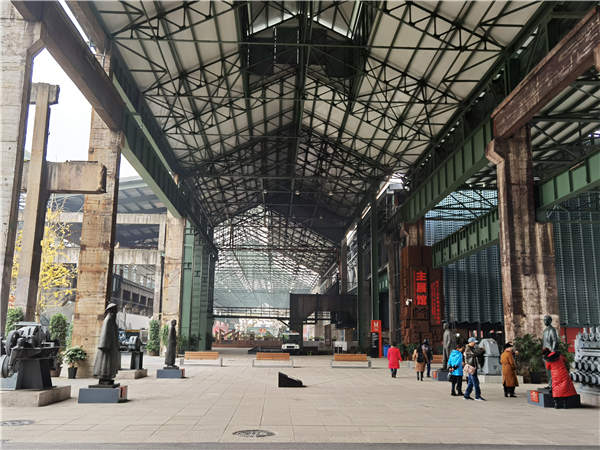

"It's even more costly to refurnish the old factory to match the criteria of the exhibitions than building a new museum," Guan says.
"But it's worth it. The neighboring communities won't thrive if we don't revive this site."
It took eight years to finish the project. A principle of "minimum intervention" was adopted to retain historical information, and all marks of renovation are recognizable and reversible, if needed in the future.
Dadukou's economy previously relied on Chongqing Iron and Steel, so it needed to find new ways to cultivate prosperity.
"The museum is like a window into our district," deputy director of Dadukou's culture and tourism committee Fan Yongli says.
"Since the old industry is gone, we need to make local communities dynamic again through tourism."
She says a cultural park centered on the industrial museum is being planned.
"The museum can also be a hub for cultural creativity," she says.
For example, its industrial elements have inspired designers to create popular souvenirs.
And artists have given the rusted iron frames new life. The colorful outdoor art pieces seem reminiscent of the Transformers.
Indeed, the site is a reminder of how steel has, itself, always been a remarkable transformer.